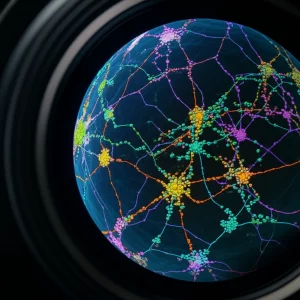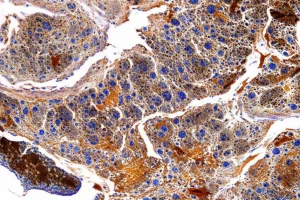Unlocking the Genetic Secrets of China’s Endangered Camellia Tachangensis
Hey there, fellow plant enthusiasts and science curious folks! Let me tell you about a fascinating journey we’ve been on, diving deep into the genetic makeup of a truly special plant. We’re talking about *Camellia tachangensis*, a unique tea relative that calls the borderlands of Yunnan, Guizhou, and Guangxi Provinces in China its home. This isn’t just any plant; it’s got this cool, primitive five-chambered ovary and is the botanical source for the famous “Pu’an Red Tea.” Pretty neat, right?
But here’s the thing: like many precious species, *C. tachangensis* is facing tough times. Human activities have been messing with its habitat, causing its populations to shrink. It’s a real shame, especially considering its scientific value for understanding how the *Camellia* genus originated and evolved in southwest China. Plus, without knowing its genetic blueprint, especially its mitochondrial genome, it’s tricky to figure out the best ways to breed it for resilience or even understand its full evolutionary story.
That’s where our adventure began! We set out to sequence, assemble, and analyze the complete mitochondrial genome of *C. tachangensis*. Think of it like creating a super detailed map of this plant’s mitochondrial DNA. Why the mitochondria? Well, these little powerhouses in plant cells aren’t just about energy; they’re key players in metabolism and hold valuable genetic clues for species classification, especially in a diverse and sometimes confusing genus like *Camellia*. They also tell us tales of structural changes and DNA transfers over evolutionary time.
Mapping the Mitochondrial Maze
To get this map, we used a combination of fancy high-throughput and long-read sequencing technologies. We grabbed some fresh leaves from a forestry center in Guizhou, extracted the DNA, and let the machines do their magic. After a lot of data crunching and assembly work, we got our first look at the complete mitochondrial genome sequence. And boy, was it interesting!
The assembly results showed a total length of 746,931 bp. But here’s the cool part: it wasn’t just one big circle like you might expect from some genomes. Instead, it had one *multibranched* sequence (we called it Chr1) and one *circular* sequence (Chr2). Chr1 was the big one at 525,875 bp, and Chr2 was 221,056 bp. They seemed pretty independent of each other. Even more fascinating, Chr1 wasn’t static; it could potentially form *seven* different substructures! Chr2, on the other hand, seemed to keep its shape.
Looking closer, we identified a bunch of functional elements: 24 core protein-coding genes (PCGs) involved in essential stuff like ATP synthesis and respiration, 16 variable PCGs (mostly ribosomal proteins), 3 ribosomal RNA (rRNA) genes, and 30 transfer RNA (tRNA) genes. Interestingly, some genes, like *nad1* and *nad2*, had parts on both Chr1 and Chr2, meaning they need a bit of post-transcriptional splicing magic to become complete.
We also found that 14 genes contained introns, with some having just one and others having up to four. It really shows the complexity packed into this genome!
The Dance of Repeats and Recombination
One of the reasons Chr1 can form those substructures is because of repetitive sequences. We found tons of them: simple sequence repeats (SSRs), tandem repeats, and dispersed repeats. The dispersed repeats were particularly interesting. We identified three pairs of long dispersed repeats (over 1,000 bp) on Chr1 that were highly similar (99.965% to 100%).
These repeats aren’t just sitting there; they mediate recombination. Depending on their orientation (same direction or opposite), they can cause the DNA molecule to split into smaller rings or even undergo inversions of segments. This dynamic process is what allows Chr1 to switch between different structural forms, creating those seven potential substructures we saw. It’s like the genome is constantly rearranging itself in a controlled dance!

We also noticed something cool about dispersed repeats between Chr1 and Chr2. There seemed to be quite a bit of “transposon exchange,” with many sequences copied from Chr1 to Chr2, but fewer going the other way. This suggests a preferred direction for some of this DNA shuffling.
RNA Editing: Fine-Tuning the Code
Another fascinating aspect we explored was RNA editing. This is a process where the cell actually modifies the RNA copy of a gene *after* it’s been transcribed from DNA, essentially fine-tuning the genetic message. We predicted 537 such editing sites in the protein-coding genes of *C. tachangensis*’s mitochondrial genome.
These edits lead to changes in amino acids, the building blocks of proteins. The most common change we saw was Serine turning into Leucine. Interestingly, almost half of the changes converted hydrophilic (water-attracting) amino acids into hydrophobic (water-repelling) ones. This could potentially impact how the resulting proteins fold and function.
We even found a few instances where RNA editing could potentially create stop codons, which would prematurely end protein translation. On the flip side, editing seems crucial for correcting the start codons of some genes (*cox1* and *nad4L*) from ACG to the standard ATG, ensuring they can be properly translated into proteins. Genes like *ccmFn*, *ccmB*, and *ccmC* had the highest number of editing sites, suggesting they might be heavily regulated at this level.
Scientists think RNA editing might play a role in helping plants cope with environmental stress, like salt or drought. While we didn’t prove that directly for *C. tachangensis*, our data provides a great starting point for future studies to explore this possibility.
Codon Preferences and Chloroplast Guests
We also looked at which codons (the three-letter DNA/RNA sequences that specify amino acids) were used most often. We found that the mitochondrial genome of *C. tachangensis* has a strong preference for codons ending in A or U. This is actually pretty consistent across many plant species, showing a kind of evolutionary stability in how these genomes “speak” their genetic language.
Now, here’s a cool phenomenon: DNA can sometimes jump between different organelles within a cell! We investigated if pieces of the chloroplast genome (the DNA in the photosynthesis factories) had ended up in the mitochondrial genome. And sure enough, we found 23 such fragments, called MTPTs (Mitochondrial Plastid DNAs). These fragments accounted for about 2.2% of the total mitochondrial genome length.

While protein-coding and rRNA genes from the chloroplast didn’t seem to survive the transfer intact, we found that *ten* complete tRNA genes were preserved within these MTPTs. These extra tRNA genes could be important for helping the mitochondria translate their own genes properly. Comparing these MTPTs with other *Camellia* species suggested that some of these transfer events happened way back before different groups within the genus diverged.
Evolutionary Tales and Family Trees
To understand how *C. tachangensis*’s mitochondrial genes have evolved, we compared them to other *Camellia* species. We looked at nucleotide diversity (how much the DNA sequence varies) and Ka/Ks ratios (which tell us about selection pressure on protein-coding genes). The Ka/Ks ratios were mostly less than 1, which is a strong sign of *purifying selection*. This means that mutations that would mess up the protein’s function are being weeded out by natural selection. It suggests that the core functions of these mitochondrial genes are really important and conserved.
Finally, we built phylogenetic trees to see where *C. tachangensis* fits in the *Camellia* family tree. We did this using both mitochondrial and chloroplast DNA data.
- The mitochondrial tree didn’t place *C. tachangensis* neatly with the main *Camellia* sections (*Oleifera*, *Camellia*, *Heterogenea*, *Chrysantha*). It seemed somewhat independent, and its clustering with some *C. sinensis* variants had very weak support.
- However, the chloroplast tree told a clearer story. It strongly supported *C. tachangensis* forming a basal group (meaning it branched off relatively early) alongside *C. makuanica*, *C. taliensis*, and *C. gymnogyna*.

Why the difference between the two trees? Well, mitochondrial genomes tend to evolve slower than chloroplast genomes, which can make it harder to resolve relationships between closely related species. Plus, there’s less mitochondrial genome data available for many *Camellia* species compared to chloroplast data. It also highlights that sometimes, even with predominantly maternal inheritance, there might be complexities like paternal leakage that can lead to different evolutionary histories for different organelle genomes.
Wrapping It Up
So, what did we learn from this deep dive? We successfully sequenced and annotated the complete mitochondrial genome of *C. tachangensis* for the first time! We discovered its unusual dual structure – a big multibranched molecule and a smaller circular one – and saw how repetitive elements allow the branched molecule to take on different forms. We mapped out all its genes, tRNAs, and rRNAs.

We found evidence of DNA transfer from the chloroplast to the mitochondria, bringing along some useful tRNA genes. Our evolutionary analysis showed that purifying selection is the main force shaping these mitochondrial genes, keeping their essential functions intact. And while the mitochondrial tree was a bit murky, the chloroplast tree gave us a strong clue about *C. tachangensis*’s place as an early-diverging species related to *C. makuanica*, *C. taliensis*, and *C. gymnogyna*.
This study is a big step because it fills a major gap in our knowledge about the mitochondrial genomes in the *Camellia* genus. This genetic data is super valuable. It gives researchers a solid foundation for future work on breeding programs to help conserve this endangered species, for understanding its unique evolutionary path, and for exploring the fascinating diversity of mitochondrial genome structures in plants. There’s still more to uncover, but we’ve definitely shed some light on the hidden genetic world within *Camellia tachangensis*!

Source: Springer







